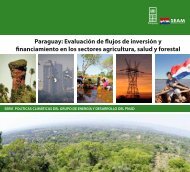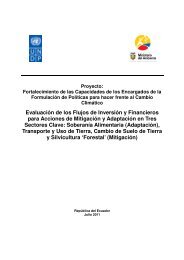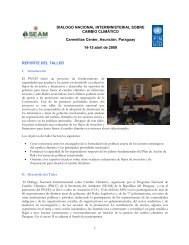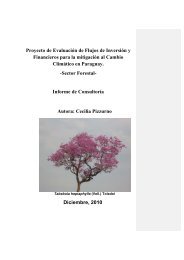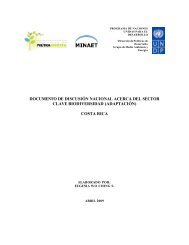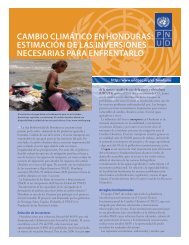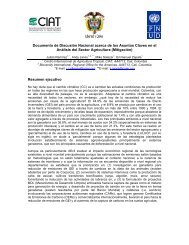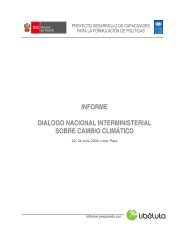View Publication - UNDPCC.org
View Publication - UNDPCC.org
View Publication - UNDPCC.org
Create successful ePaper yourself
Turn your PDF publications into a flip-book with our unique Google optimized e-Paper software.
17 Cannady — Access to Climate Change Technology by Developing Countries: A Practical Strategy<br />
Beyond the examples of China and Cuba, small<br />
countries and LDCs can strategize for how to<br />
build value from their intellectual capital,<br />
including participation in regional networks<br />
and making savvy decisions concerning<br />
target clusters (e.g. Cuba in biotechnology).<br />
Barbados is an example of a small country that<br />
has developed and commercialized science<br />
in solar energy and biomass. 61 Colombia<br />
has recently created a network of national<br />
research institutions working on new energy<br />
technology. 62 Cameroon and other central<br />
African nations formed a research network<br />
of universities engaged in medical research. 63<br />
Thailand’s eminent universities have made<br />
strong advances in biotech and medicine.<br />
Ethiopian scientists have made significant<br />
contributions in tropical medicine. Singapore<br />
universities are working dynamically in green<br />
construction and in water technologies and<br />
developing an important IP portfolio through<br />
the national agency for scientific research,<br />
A*STAR, and its expert technology management<br />
arm, Exploit Technologies. 64<br />
Innovation strategy is not a “one size fits<br />
all” approach. Small, very poor countries<br />
3.2 Technology Collaboration Based on<br />
“Win–Win” Contracts<br />
The second prong of this approach is to promote<br />
mutually beneficial (“win–win”) technology<br />
contracts to spread climate change technologies.<br />
A win–win technology contract results<br />
when the material terms of the contract provide<br />
that both parties contribute relatively equal<br />
value to a technology transaction and stand to<br />
gain relatively equal benefit. Contracts where<br />
both parties win in relatively equal amounts<br />
will have a more difficult time than BRICS<br />
in trading on their human capital, but these<br />
handicaps would be true for any programme<br />
of development. LDCs will need to tailor<br />
innovation strategies to their needs and<br />
capacities. LDCs can join networks and engage<br />
in south–south collaborations as a way to gain<br />
economies of scale and participate in larger<br />
regional innovation strategy. IP, far from<br />
hindering that participation, can be helpful<br />
because small actors can claim economic<br />
value in intellectual capital.<br />
Innovation strategy means investing in<br />
national intellectual capital and in infrastructure<br />
to enable developing country<br />
parties to commercialize research results<br />
so that they can achieve a return on that<br />
investment. The second prong of the approach<br />
recommended by this paper relates to how<br />
developing countries can commercialize<br />
technology. Universities and research institutions<br />
in developing countries need to<br />
enter into balanced voluntary licensing and<br />
development collaboration agreements that<br />
recognize the full economic value of their<br />
intangible assets.<br />
are considered sustainable because the parties<br />
willingly abide by the terms. By contrast, win–<br />
lose contracts, or contracts where one side has<br />
a considerably greater benefit than the other,<br />
tend to create unstable business relationships<br />
because over time the losing party will try<br />
to avoid the contract terms or terminate the<br />
contract. Three examples of win–win contracts<br />
are provided in Box 2.




